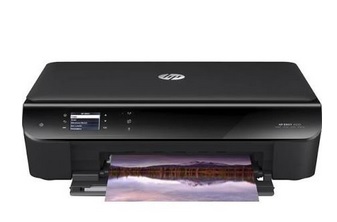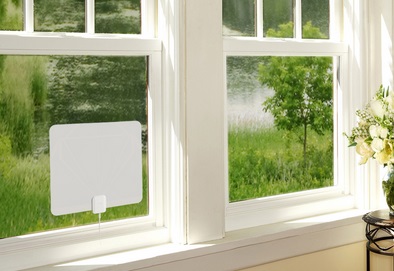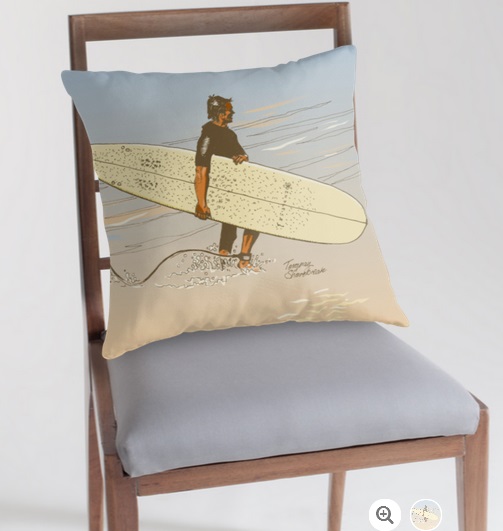Rick is in Green Bay all week at Packers training camp and checking out various things in Green Bay
Rick and Mitch take a look at some of the new technology being tried out in football in 2014
More information at www.greenbay.com
Have a listen:

**Topics**
New football tech
1. High School team to test new high tech helmet
Riddell approached North Little Rock High's football team about trying a new helmet sensor that can alert trainers when athletes may have sustained a concussion. It's a brand new technology that only a handful of schools around the country are using.
"There's no high school in the state of Arkansas with this technology right now," said North Little Rock Athletic Director Gary Davis. "Concussions are a major concern for every football program."
Davis was honored when Riddell approached his program about trying its new InSite Impact Sensors. The sensors, put inside a players' helmet, record the strength of every hit and send alerts to a handheld device on the sideline when the impact is strong enough.
"If a kid sustains a big enough impact it will alert the trainer that this happened," said Davis, "which gets us started on the preventative measures and the recuperation of that athlete making sure that we don't put him in any more danger."
The sensors don't just monitor big hits, they record every hit and even send an alert when a individual player sustains multiple lower-level impacts over the course of a week. While Davis would love to put one of these in every football helmet in his school district right now, it's not in the budget.
2. NFL placing RFID tags in helmets and shoulder pads
“The NFL will use Zebra Technologies’ real-time location system in 17 stadiums during the 2014 season.
The tech will track position, speed, and distance, sending it first to RFID receivers around the arena and then to a database where the NFL is envisioning new uses for the data. Zebra, which is better known for building asset-tracking tech for Fortune 500 companies, will install the receivers in the 15 stadiums that host Thursday Night Football games (Atlanta, Baltimore, Carolina, Chicago, Cincinnati, Denver, Green Bay, Houston, Jacksonville, Miami, New England, Oakland, San Francisco, St. Louis, Washington) as well as in Detroit and New Orleans. The data will be captured from all 32 teams and presumably will be shared among them.”
3. New technology on the NFL Sidelines (Tablets)
Gone are the days when NFL teams took Polaroid pictures of plays from atop the stadium during games then send them down to the field on a rope.
Technology improved so that an automated camera could deliver the images to a printer on the sideline, creating that familiar sight of a quarterback staring at a sheet of paper to figure out what went wrong on an interception.
Tablets as in Microsoft Surfaces will be allowed for the first time this season and it started with Sunday's Hall of Fame game, though they won't exactly be running the most cutting-edge apps. The devices will replicate the old system of transmitting still photos to the field — but faster, clearer and in color.
No surfing the Web. No selfies or tweets. And more important from a football standpoint: no watching replays of the last snap.
For every game this season there will be 13 tablets on each sideline and 12 in each coaches’ box providing overhead snapshots. Only now they will arrive more quickly and in color.
Two pictures per play — one just before the snap and one after the play is over — are all the league allows.
4. New 49ers' Levi Stadium - high tech stadium
The new $1.2 billion 68,500-seat venue 39 miles south of Candlestick Park in Santa Clara and about 30 feet from the 49ers’ team headquarters -- designed something different, creating a stadium with the most lower-bowl seats in the NFL, stacking all the suites in a hotel-like structure on the west side, fully exposing the entirety of the concourses and integrating the high-tech amenities you’d expect from a stadium that features views of some of the world’s most influential tech company headquarters.
The 49ers were able to glass-in an oversized team store and magnificent 20,000-square-foot museum with 150 artifacts on the street level. A year-round restaurant and television studio also sit at street level.
Located under the seating bowl at the 50-yard-line, one of the more exclusive locations in the venue, the BNY Mellon club -- one of the five clubs and part of the 9,000 club seats -- will give patrons a college-style experience, with the 49ers players walking through the club on their way to the field. While the majority of the club rests below the seats, patrons will move onto the field and up into the stands to find their seats.
Each of the five clubs was created to offer use year-round for special events and designed in a different local theme and indigenous wood, featuring some of the over 200 pieces of original artwork commissioned for the building or 49ers photos.
A 25-beer tap room on the main concourse will attract visitors and the upper deck end zones each feature club-style party decks directly below the 200 feet by 48 feet scoreboards, one sponsored by Budweiser and the other Pepsi. The Budweiser deck, with a nice view of the roller coasters at next-door California’s Great America amusement park, has a wide offering of beverages planned.
The scoreboards, the highest points of the stadium, rise 188 feet, the tallest allowed by the FAA as Levi’s Stadium sits directly below the San Jose airport’s flight path. Southwest Airlines -- one of the largest carriers to the airport -- will get plenty of free advertising that way.
The stadium’s other high-flying location is the 27,000-square-foot green roof atop the suite tower that includes 16 different species of plants. The roof can open like a club-style venue offering fans the ability to mingle near the stadium lighting, an experience unlike any other in sports.
Expect plenty of sustainable aspects to the roof. Along with helping filter water, the roof holds an 18,000 square foot solar terrace that assists with housing 1,162 photovoltaic panels used in the building and on the three pedestrian bridges. Levi’s Stadium plans to score LEED Gold status, the first new professional football stadium to reach it. On game days, the stadium will achieve net-zero energy with the onsite power generation staying in the internal grid.
A new in-stadium app will give fans not only high-speed connectivity, but also access to information and real-time video.
Within the stadium, 2,000 Bluetooth low-energy beacons will provide access to static maps and stadium information. In-app food ordering will allow for in-seat food delivery for every single seat and the team will have over 1,000 runners to handle the demand. But if you get up, you can find charging stations in the drink rails.
From mobile ticketing to GPS locators telling you where the nearest concession fare, beer or restroom is, the “hero feature” of the app, Guido said, is the ability to offer in-game replays and video content.
“You might not have seen if he got two feet inbounds and we can deliver three to five replays and angles within five seconds,” he said of the in-stadium broadcast featuring 13 stadium cameras.
To keep this all working, Levi’s Stadium will have over 400 miles of data cable, including 70 miles of cable to support WiFi, with an access point under every 100 seats. In all, more than 12,000 physical network ports and 1,000 WiFi access points have been installed, supporting a bandwidth 40 times larger than any known U.S. stadium and plenty of IPTV throughout the 4K facility.
Also 194 charging stations for your gadgets.

5. Otterbox offers new NFL-themed Cases
For fans who want to protect their smartphone and support their favorite team, OtterBox®, the No. 1-most trusted brand for smartphone protection, provides premium coverage with the Defender Series® for Apple® iPhone® 5/5s, Samsung® GALAXY S® 4 and S 5, now available with all 32 NFL team logos.1
Through a relationship with Verizon Wireless® and officially licensed by the NFL, fans can sport their NFL team logos, while still protecting their smartphone from drops, dust and scratches.
"NFL fans are passionate, and cases with team logos are a top request from our consumers," said OtterBox CEO Brian Thomas. "We are elated to team up with our partners at Verizon Wireless to offer officially licensed NFL products. The Defender Series provides our fans trusted OtterBox protection that is tougher than the meanest lineman and shows off their favorite team at the same time."
The iPhone 5s NFL case includes a built-in screen protector and utilizes a full polycarbonate shell and exterior slipcover to help guard smartphones from mishaps.2 A holster-style belt clip is included for hands-free carrying and doubles as a media stand, perfect for streaming games away from home.
NFL-themed Defender Series cases are now available for all 32 NFL teams on otterbox.com and verizonwireless.com for $64.95. For more information, visit otterbox.com.

App of the Week
NFL Now for iOS, Android and Windows
+ Select your favorite teams and players and get non-stop video streaming
+ Access the extensive NFL video library, including NFL Films archives
+ Follow your NFL.com fantasy roster with instant news and stories
+ Watch instant highlights on gamedays

 Wednesday, September 3, 2014 at 11:14PM
Wednesday, September 3, 2014 at 11:14PM 


 92.9 The Game,
92.9 The Game,  Mobile Alabama,
Mobile Alabama,  Wireless Wednesday,
Wireless Wednesday,  app of the week in
app of the week in  92.9 The Game,
92.9 The Game,  Sports,
Sports,  atlanta,
atlanta,  radio,
radio,  tech
tech 















